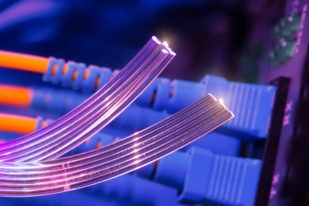Dark fiber will empower enterprises and along with driving down internet costs for customers, and it may well be a crucial and integral component of 5G.
There has been a lot of buzz in the telecom sector regarding dark fiber and its capabilities to grant faster, cheaper, and more flexible connectivity to enterprises. But then, what dark fiber exactly is and how vital it is for 5G? Read on!
What is dark fiber?
Current internet traffic is transmitted by miles of fast fiber optic cabling laid underground. However, not all of that cabling is being utilized.
This unused fiber optic cabling, which goes not have any electronic device attached at its either end, is called dark fiber, a moniker associated with its ‘unlit’ state.
Why does dark fiber exist?
As of now, the highest cost associated with installing a fiber optic cabling lies in the process, instead of the actual cable materials.
This implies that internet infrastructure enterprises will tend to lay more of fiber optic cabling than necessary. It is far more cost-efficient to create plenty of headroom in one visit rather than repeatedly digging up the ground and laying fresh cabling as per requirement.
This leads to a situation where there’s a bigger amount of potential network capacity laying unused in the form of dark fiber. Fortunately, there are ways to effectively utilize this dark fiber.
How can dark fiber be utilized?
Currently, companies relying on network connectivity actually depend on the exact same network that you use on launching a Google query or checking out your social media.
With a massive increase in data consumption, this tend to create difficulties for enterprise that need clear headroom and a specific amount of consistency in terms of network environment. Also, it relatively expensive for enterprises to pay internet services providers like BT to use their network in this manner.
Essentially, dark fiber will be provided as a means for an enterprise to set up their personal network. They will lease the unused cabling, and then offer all the equipment at either end.
What are the advantages of dark fiber?
An enterprise using dark fiber instead of existing ‘lit’ fiber optic network will be the pioneers of their domain. They will have complete authority over their network equipment as well as connection settings, and will not be forced to share their network portion with anyone else.
By utilizing these less travelled pathways, drastically reduced traffic congestion as well as wasteful rerouting will be there. This will result better response times, (i.e. lower latency) and faster network speeds.
By removing the middleman, utilizing a dark fiber network will not just be cheaper but the troubleshooting time will also be reduced significantly.
How will dark fiber benefit 5G?
While the upcoming 5G network will depend on numerous base stations for connecting to mobile phones as well as fixed wireless broadband routers over the final mile, it will still depend on the current physical fiber optic network for carrying that traffic over large distances.
However, numerous US mobile network operators have expressed their concerns that the fiber infrastructure in the US isn’t ready for 5G.
It will be interesting to see if opening out the access to dark fiber will be a big plus for customer in the conventional broadband space. However, it looks certain to be a key component in the fully functional 5G network we’re waiting for.

